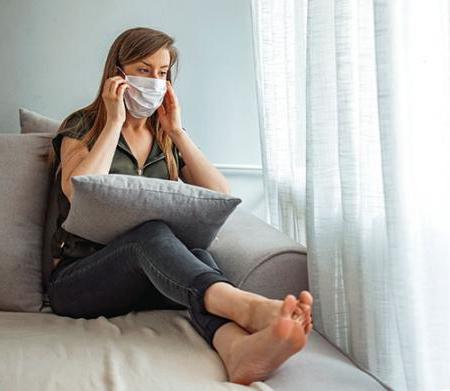你在这里

新型冠状病毒肺炎
Vaccine arives, mysteries persist
朱莉·埃斯特利克
 As the fight against 新型冠状病毒肺炎 enters the winter months, there is encouraging news with the arrival of vaccines. As people gain access to vaccines, the community’s immunity level will rise, slowing the spread of this significant illness that has so far infected over 325,000 Coloradans and killed about 4,000. There is also progress and hope in the development of improved treatments, which have already begun to help more and more people survive the worst cases. 然而, the disease can still be fatal, tens of thousands of Americans are dealing with lingering illness long after first being infected, and a sharp increase in cases at the end of 2020 means the battle is far from over.
As the fight against 新型冠状病毒肺炎 enters the winter months, there is encouraging news with the arrival of vaccines. As people gain access to vaccines, the community’s immunity level will rise, slowing the spread of this significant illness that has so far infected over 325,000 Coloradans and killed about 4,000. There is also progress and hope in the development of improved treatments, which have already begun to help more and more people survive the worst cases. 然而, the disease can still be fatal, tens of thousands of Americans are dealing with lingering illness long after first being infected, and a sharp increase in cases at the end of 2020 means the battle is far from over.
One of the mysteries of 新型冠状病毒肺炎, the disease caused by the novel coronavirus, is that some who get it will have no symptoms; others will have mild symptoms like a cold, stomach bug or flu; and some will get very sick—with a small percentage dying. Some will recover fairly soon, but some have more lasting impacts that are far different from what we expect from our experience with a typical cold or flu.
The usual recovery period for a mild case of COVID is around two weeks. People who continue to have chest pain, 注意力难以集中, 肌肉无力, 呼吸急促(气促), and crushing fatigue that persists after a month to six months or more are increasingly being referred to as post-COVID “long haulers.”
“除此之外非常健康。, active individuals who were running marathons or hiking up mountains now can’t walk across the room without getting exhausted,博士说。. 莎拉·乔利, a pulmonary critical care doctor and director of the Post-新型冠状病毒肺炎 ICU Clinic at the UCHealth University of Colorado Hospital on the Anschutz Medical Campus.
So far there doesn’t seem to be much rhyme or reason as to who takes longer to recover, and no one knows how long symptoms will endure into the future and whether the virus will cause chronic diseases. Patients only mildly affected by COVID still can have lingering symptoms, and people who were severely ill can be back to normal two months later. Some patients surveyed report that their symptoms have improved and then worsened again over time, 引起额外的焦虑. According to a report in Science magazine, continued symptoms are more likely to occur in people over age 50, people with two or three chronic illnesses, and people who became very ill with COVID.
保持警惕
对任何年轻人来说, healthy person tempted to think getting COVID will be no worse than, 说, 得了一阵流感, Jolley’s experience tells her differently. “The reaction to this virus seems to be much more significant than what we’ve seen in other viruses.” Older adults and others at higher risk may fare even worse.
 It is an incredibly difficult challenge for a community to try to slow the spread of COVID while balancing daily life, including our economic and mental health needs. 数据波动, in large part depending on how careful we all are, according to infectious disease experts. Case numbers shot back up in the fall causing the virus to spread faster, and hospital ICUs locally and across the country began filling up with COVID patients. If a hospital’s capacity gets overwhelmed, other critically ill patients may suffer as medical staff is forced to prioritize who gets care.
It is an incredibly difficult challenge for a community to try to slow the spread of COVID while balancing daily life, including our economic and mental health needs. 数据波动, in large part depending on how careful we all are, according to infectious disease experts. Case numbers shot back up in the fall causing the virus to spread faster, and hospital ICUs locally and across the country began filling up with COVID patients. If a hospital’s capacity gets overwhelmed, other critically ill patients may suffer as medical staff is forced to prioritize who gets care.
The good news is that vaccine vials have arrived in Colorado and the end is finally in sight. But it will be months before the general public can get their COVID shots. Public health officials stress that caution is warranted until the vaccine is widely available in our community. Their advice: Keep wearing a mask, stay at least 6 feet apart from others, 避免聚会, 经常洗手, cough or sneeze into your elbow, and stay home when you are sick.
We all want to stay healthy and live to see a post-COVID world, enjoying an unrestricted life again with our friends and loved ones. But we’re not there quite yet—it’s important to stay vigilant!